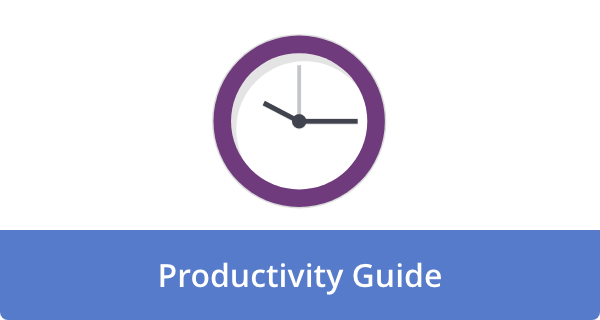Meetings are essential for many organizations. They provide an opportunity to give updates on tasks and projects, ask questions, and ensure everyone remains on the same page. They can also become key decision-making platforms and build company-wide rapport. However, as the old saying goes, it’s possible to have “too much of a good thing.” This is especially true when it comes to meetings.
Expecting employees and teams to get together too often can backfire in a big way. Instead of leading to improved productivity, overscheduling meetings can potentially cause productivity to plummet. Additionally, a company culture of excessive in-person gatherings can lead to overwhelming feelings and increase the possibility of burnout. As a business owner or manager, remember that less is often more when it comes to mandatory work gatherings. Here’s how your business can benefit from scheduling fewer meetings.
Minimize Distractions
Though some meetings are necessary and beneficial for your organization, too many can become a distraction. When your employees are hard at work focusing on a project or upcoming deadline, it can be frustrating to stop in the middle to attend a meeting. This is especially true if they feel like they have little to gain or add to the conversation. Before planning another mandatory business gathering, ask yourself if it’s truly needed and if all invitees can gain from or contribute to it. If not, it may be time to rethink or reschedule it.
According to Gloria Mark, the lead of a study analyzing the cost of interrupted work, distractions come at a cost. She says it takes the average person about 23 minutes to regain focus after a distraction. Therefore, if the average workday is constantly interrupted by meetings, overall productivity will likely dip. To minimize distractions, schedule fewer meetings and try to cover more information in the ones you do schedule. A good scheduling app like Calendar, Microsoft Calendar, or Google Calendar can help you quickly set up or reschedule team meetings.
Reduce Unnecessary Overtime
If your employees struggle to complete everything in a 40-hour workweek, too many meetings could push them into overtime. This might not seem like a big deal at first glance. However, consistently paying overtime could cost your company a lot in the long run. It’s best to keep meeting requirements reasonable so workers don’t feel they have to work overtime to meet expectations.
The Fair Labor Standards Act (FLSA) requires companies to pay employees time-and-a-half for all hours worked over 40 per week. If an employee’s standard hourly wage is $15/hour, you must pay them $22.5 per hour for any hours exceeding a 40-hour workweek. If this happens consistently, you could pay your employees significantly more in a year than if they didn’t work overtime.
Improve Employee Morale
Team members who communicate well and spend time bonding with each other tend to have high morale and workplace efficiency. Getting employees together regularly in a fun environment can boost camaraderie and belonging. But, contrary to what you may think, the typical meeting isn’t considered a “fun environment” for most people. You may think you’re boosting employee morale by scheduling many meetings, but you could do the opposite.
Too many meetings can have various unwanted consequences, including decreased employee morale. They can cause employees to feel disengaged, especially if attendees view them as largely unproductive. If your workers develop meeting fatigue, the workplace culture may become negative and toxic, which could lead to increased turnover rates. Avoid these issues by being very selective about your scheduled meetings and ensuring they’re productive, engaging, and positive.
How to Reduce Meetings Without Negative Consequences
You know now how important it is to minimize the number of meetings your employees must attend each week. But you may wonder how to cut back without unintentionally decreasing communication, missing deadlines, or causing confusion. Here are a few suggestions for reducing meetings without unwanted negative consequences.
Limit Attendees
When scheduling any meeting, be highly selective about who you invite. This is not the time to include everyone, so no one feels left out. Limit attendees to ensure you’re not unintentionally inviting someone who doesn’t need or want to be there. For example, consider inviting only department heads instead of requiring entire departments to come. They can report back to their teams so everyone remains on the same page and knows how to work toward the same goals.
Cancel Redundant or Unnecessary Meetings
Too often, companies schedule redundant meetings without even realizing that’s what they’re doing. Whenever possible, identify and cancel redundant or unnecessary meetings. For example, combine two weekly project update meetings instead of scheduling them into a single meeting. You should also cancel any meetings that are totally unnecessary and only serve to distract and frustrate attendees. Consider taking a company-wide poll to determine which meetings team members see as a waste of time and which are indispensable.
Create and Stick to Agendas
When you get multiple people together, it’s easy for a discussion to veer off-subject. This is especially true if you enjoy each other’s company and like to engage in small talk. But if you’re serious about avoiding meeting fatigue, creating and sticking to an agenda each time you get together is crucial. If you have a particularly chatty group, include 5-10 minutes of small talk in your agenda. That way, people enjoy briefly discussing their personal lives without throwing the whole meeting off course.
Try to Make Meetings Shorter
Keeping meetings short can be easier than you think if you’re well-prepared. With a succinct agenda, you should be able to whittle lengthy meetings down into shorter timelines. Sharing the agenda with employees in advance allows them to prepare for the meeting and use their time together. You may also find that utilizing AI in your meetings makes it easier to keep things brief. AI can help you define and track agenda items, transcribe meeting notes, and generate meeting action items.
Use Other Communication Channels When Appropriate
Are meetings the only way to keep everyone informed and on the same page? You’d be surprised how many meeting agendas could be covered just as well or even better using another form of communication. For example, you can send a company-wide email informing workers about your new product launch plans. Or you could set project deadlines in an online scheduling tool and automatically share them with entire teams. Occasional meetings are great for gathering feedback and answering questions, but you can also use other communication channels to keep everyone on the same page.
Conclusion
Meetings serve an important purpose, so it’s important not to toss them all out to save time and reduce fatigue. However, many companies overschedule meetings without realizing how this practice impacts overall efficiency and morale. It’s in your best interest as a business owner or manager to reduce redundant or unnecessary meetings whenever possible. Doing so will minimize distractions in the workplace, reduce unnecessary overtime, and boost employee morale. Use these tips to responsibly cut back on meetings without experiencing unintended negative consequences.
Featured Image Credit: Photo by cottonbro studio; Pexels











Angela Ruth
My name is Angela Ruth. I aim to help you learn how Calendar can help you manage your time, boost your productivity, and spend your days working on things that matter, both personally and professionally. Here's to improving all your calendars and becoming the person you are destined to become!